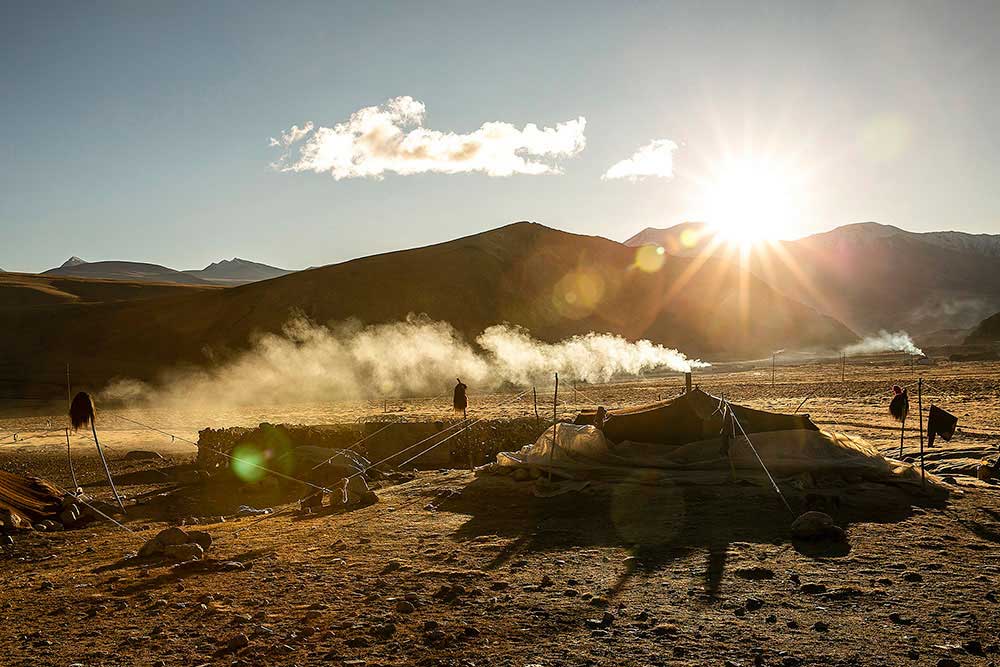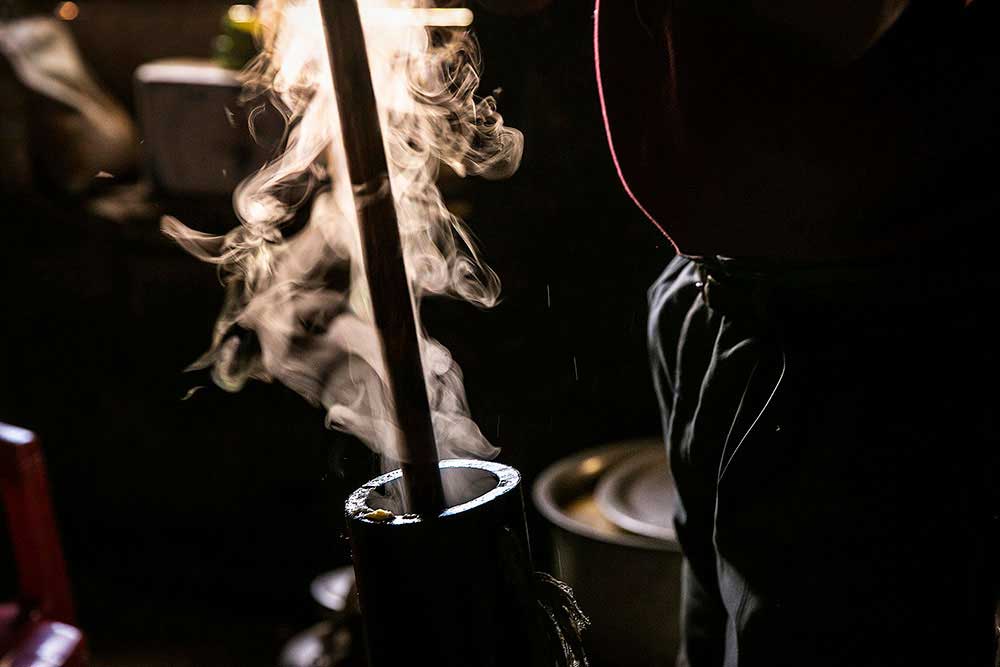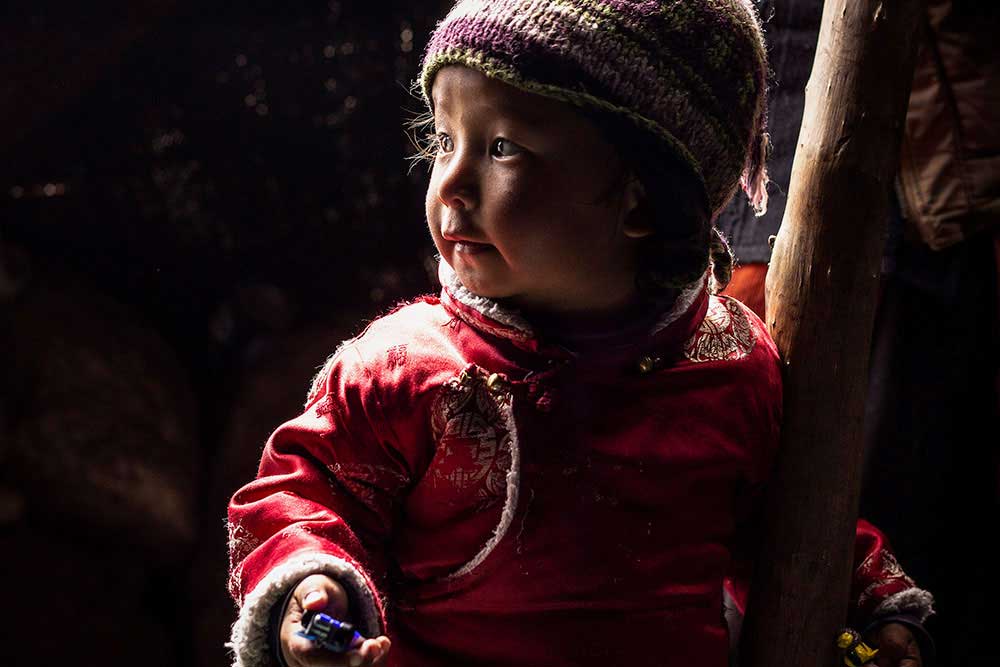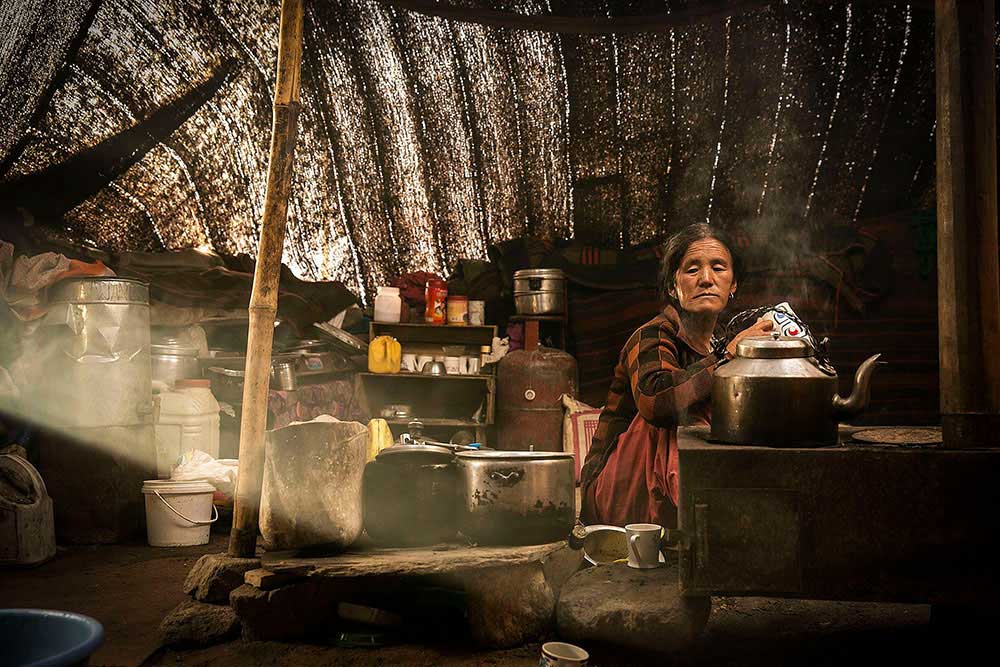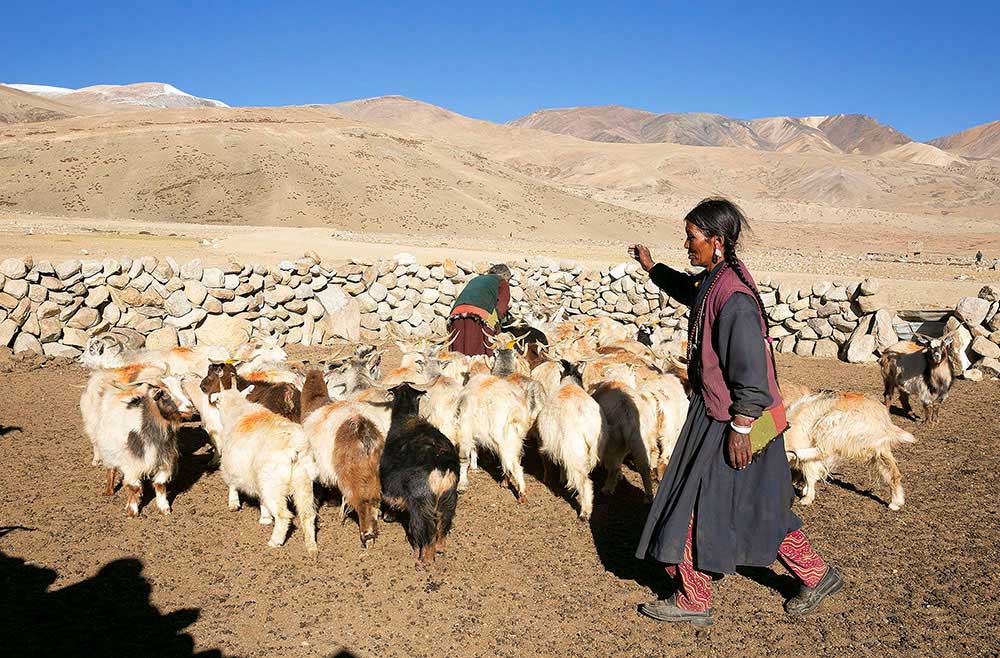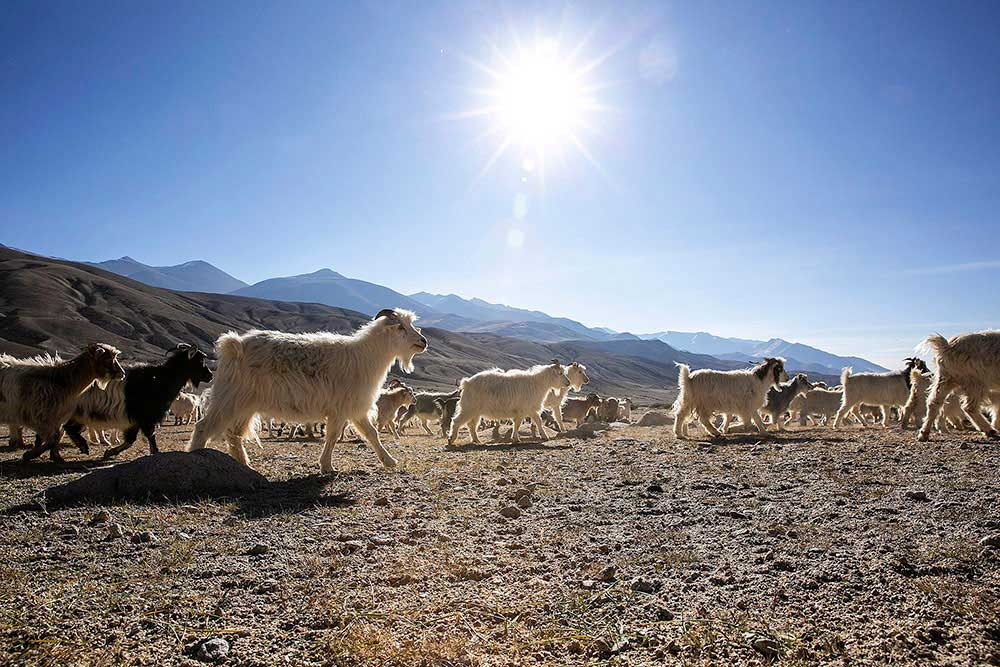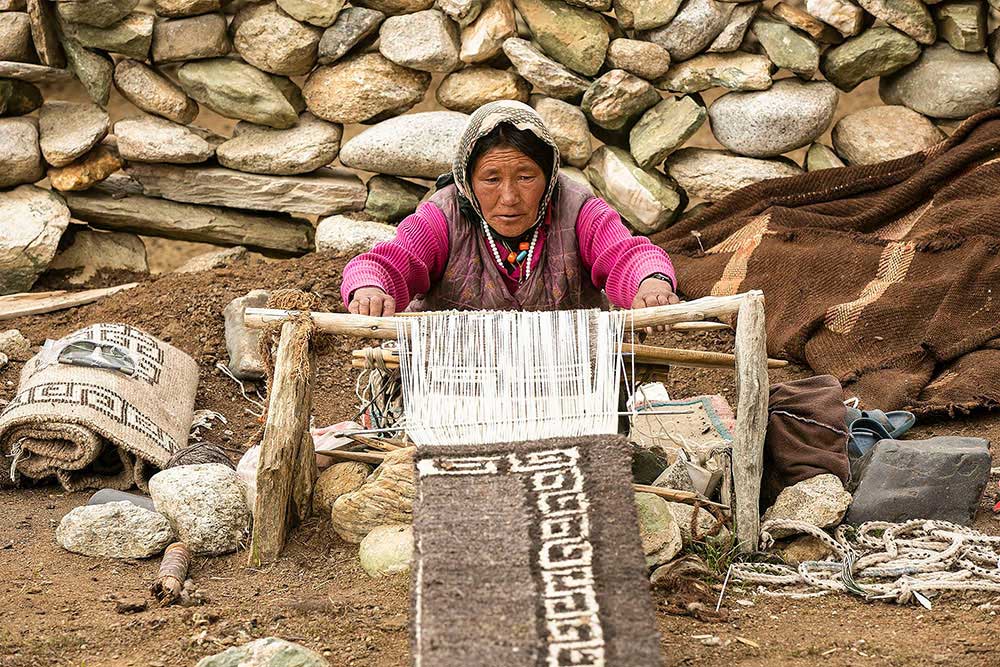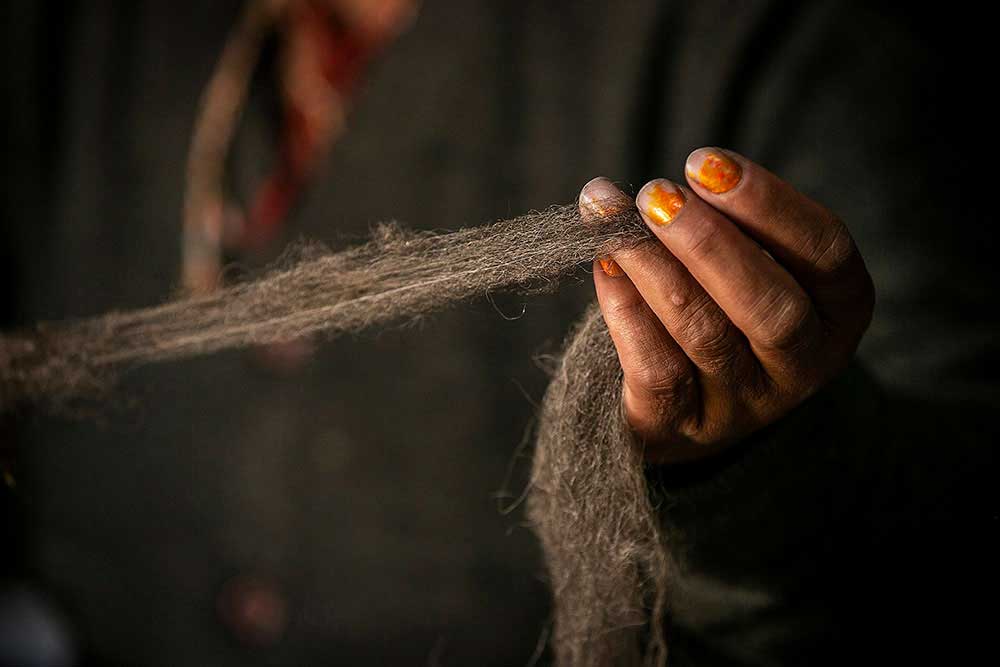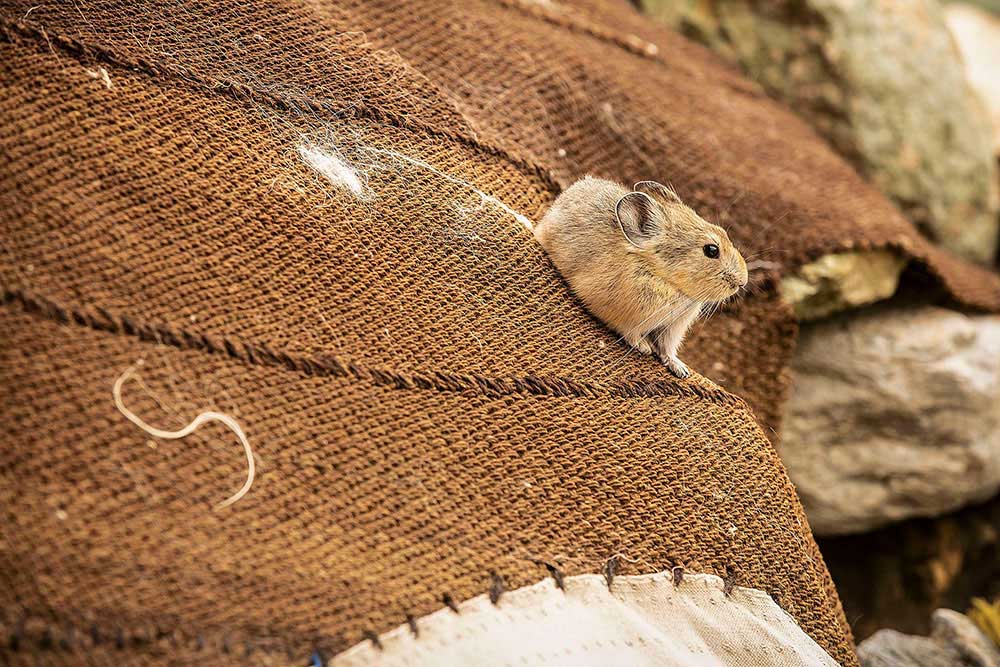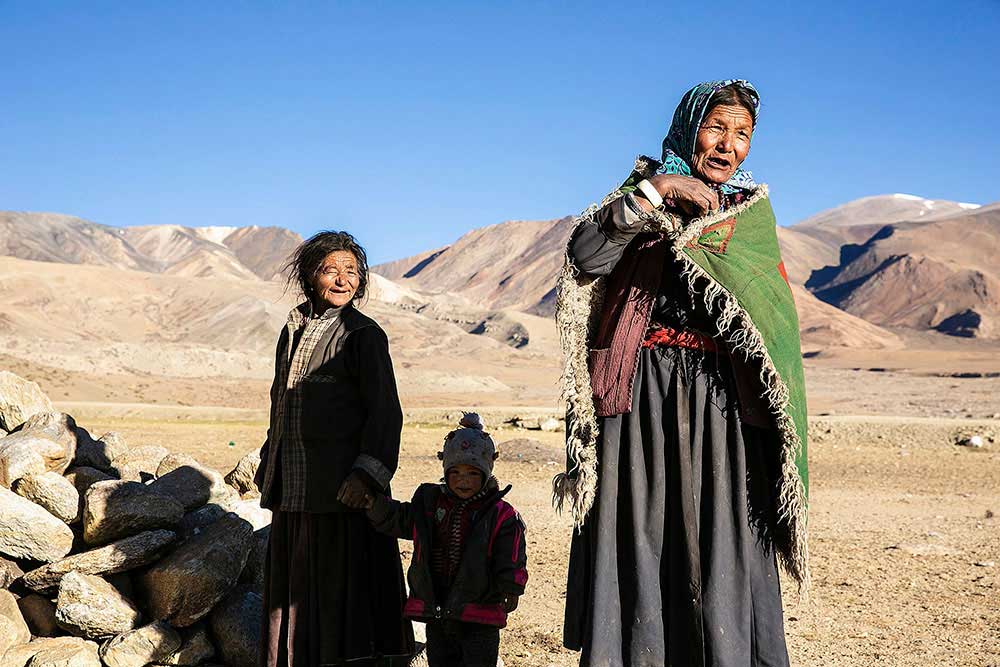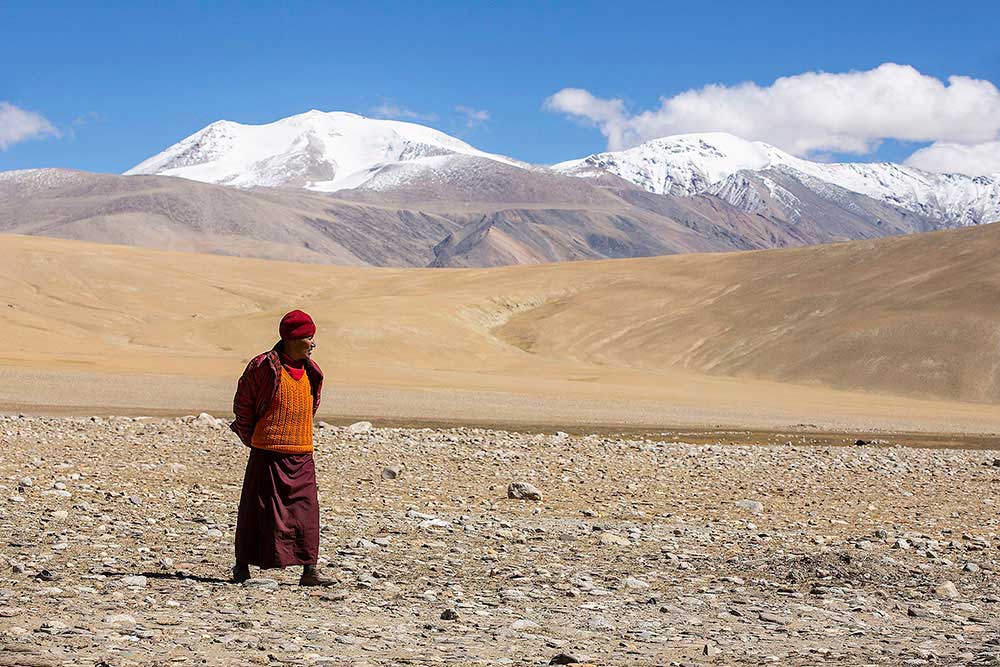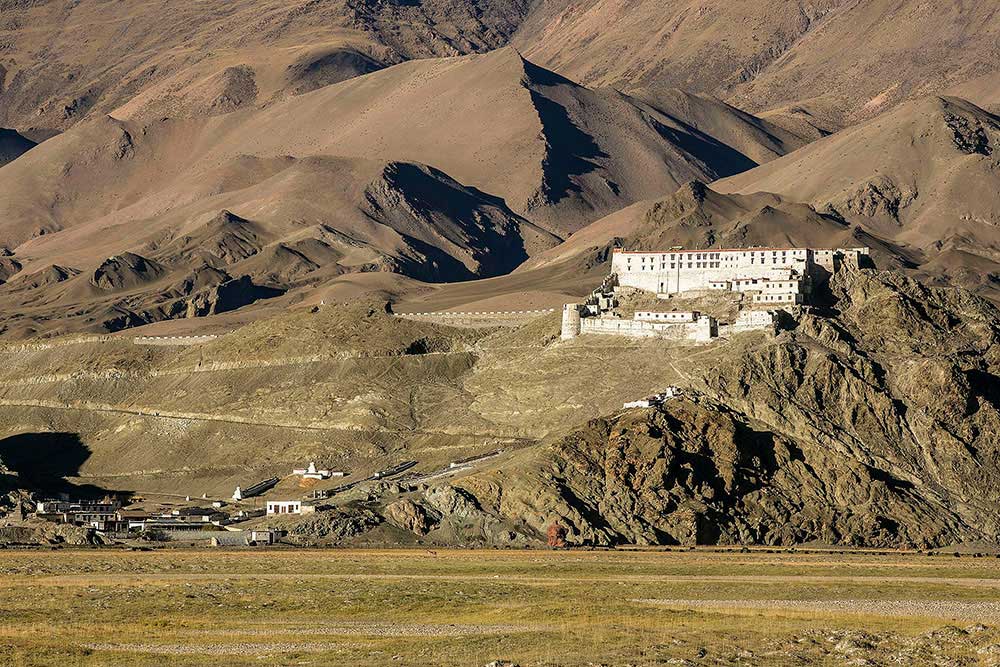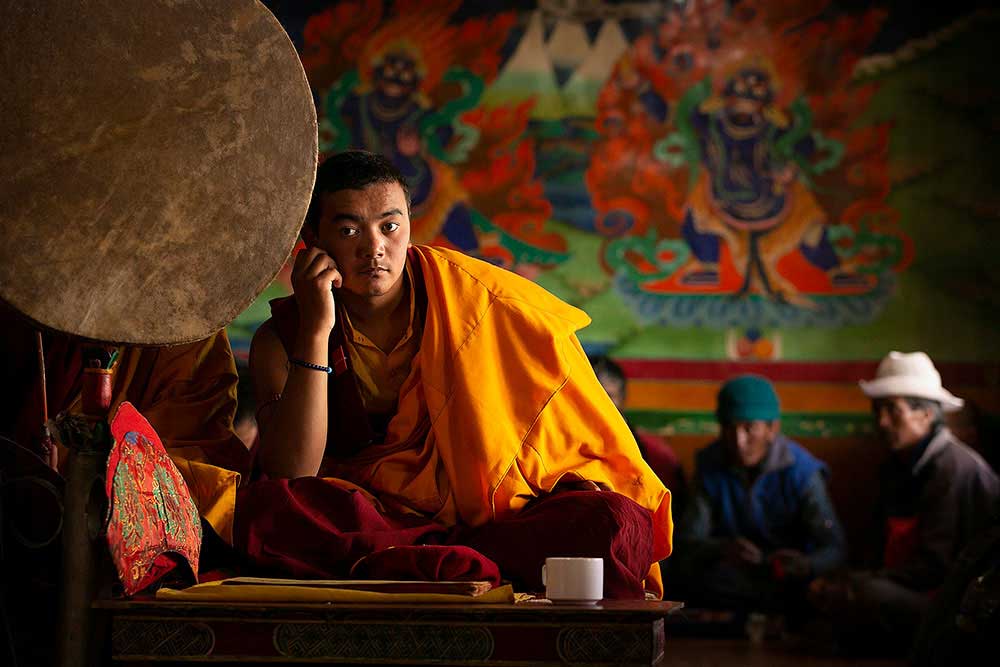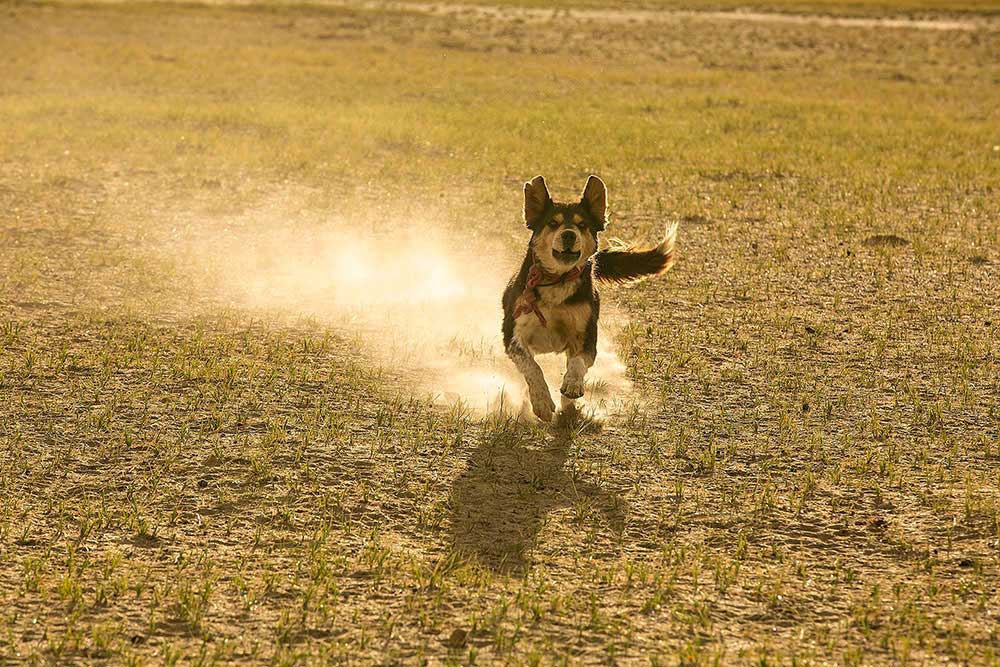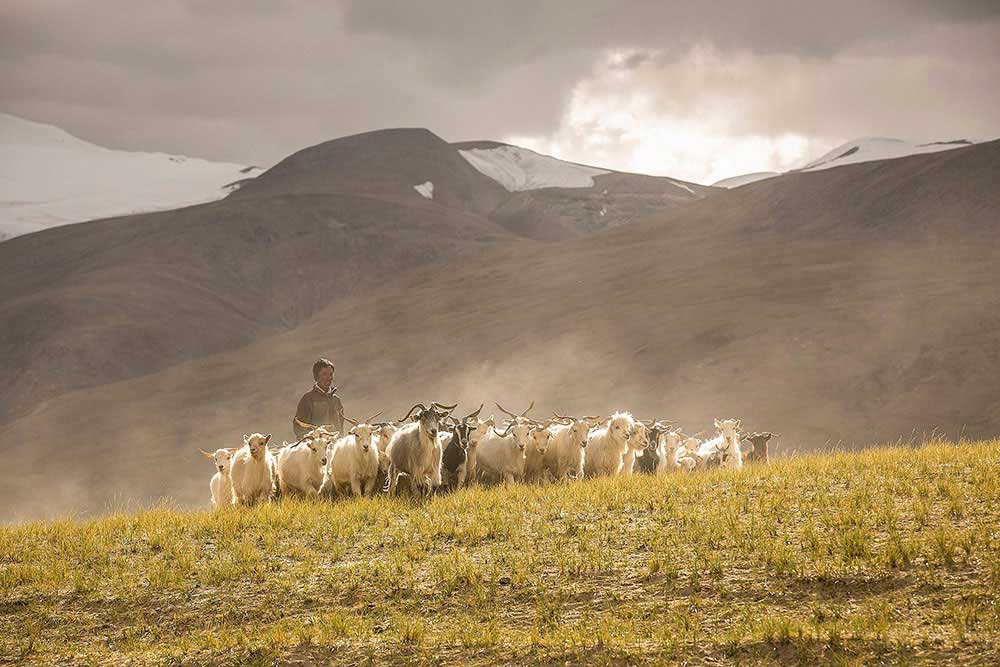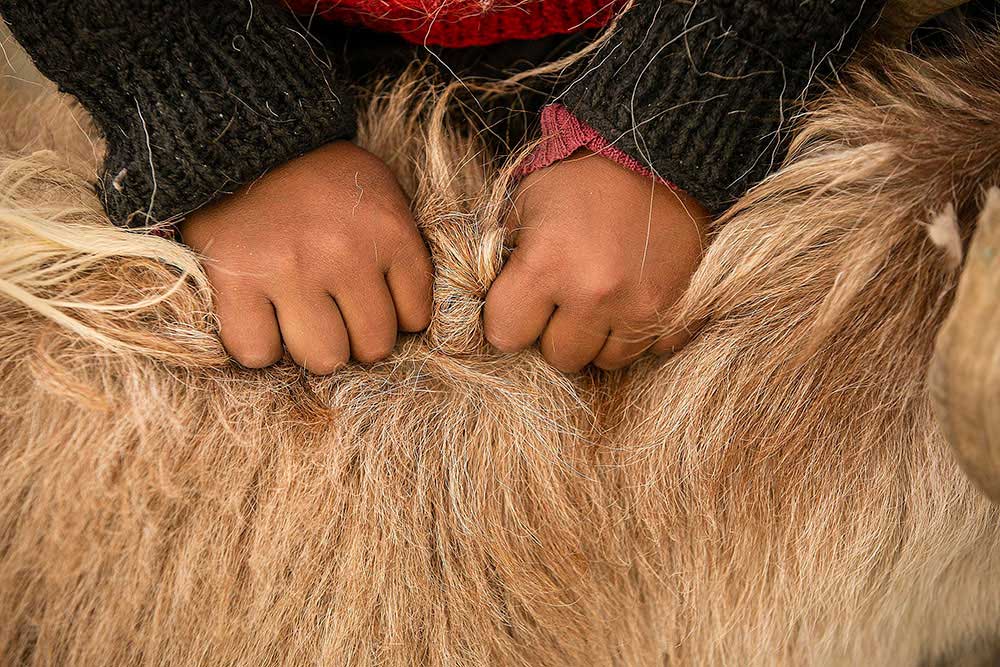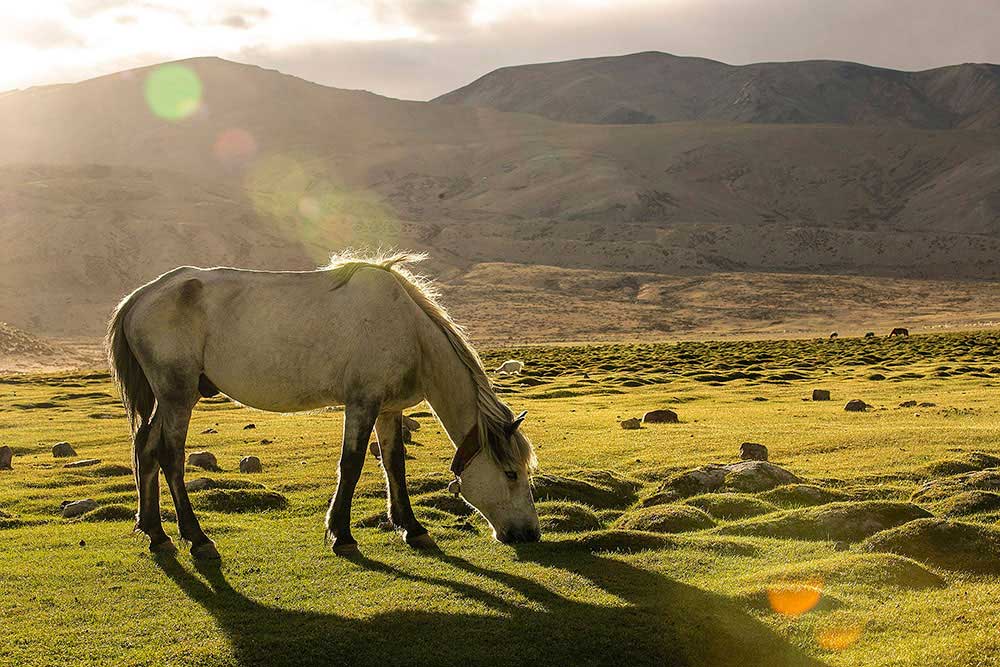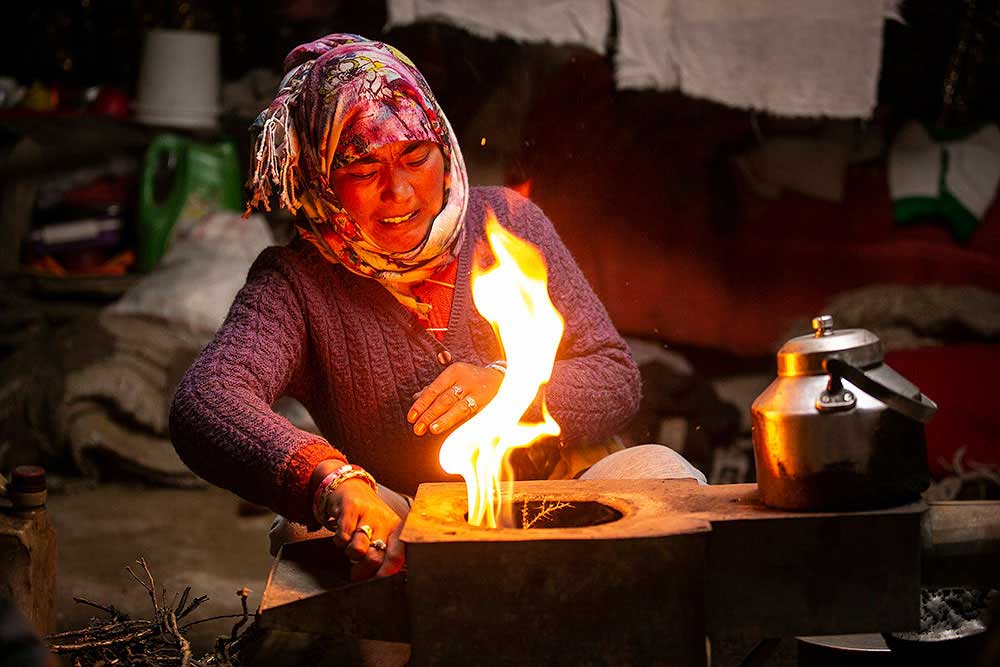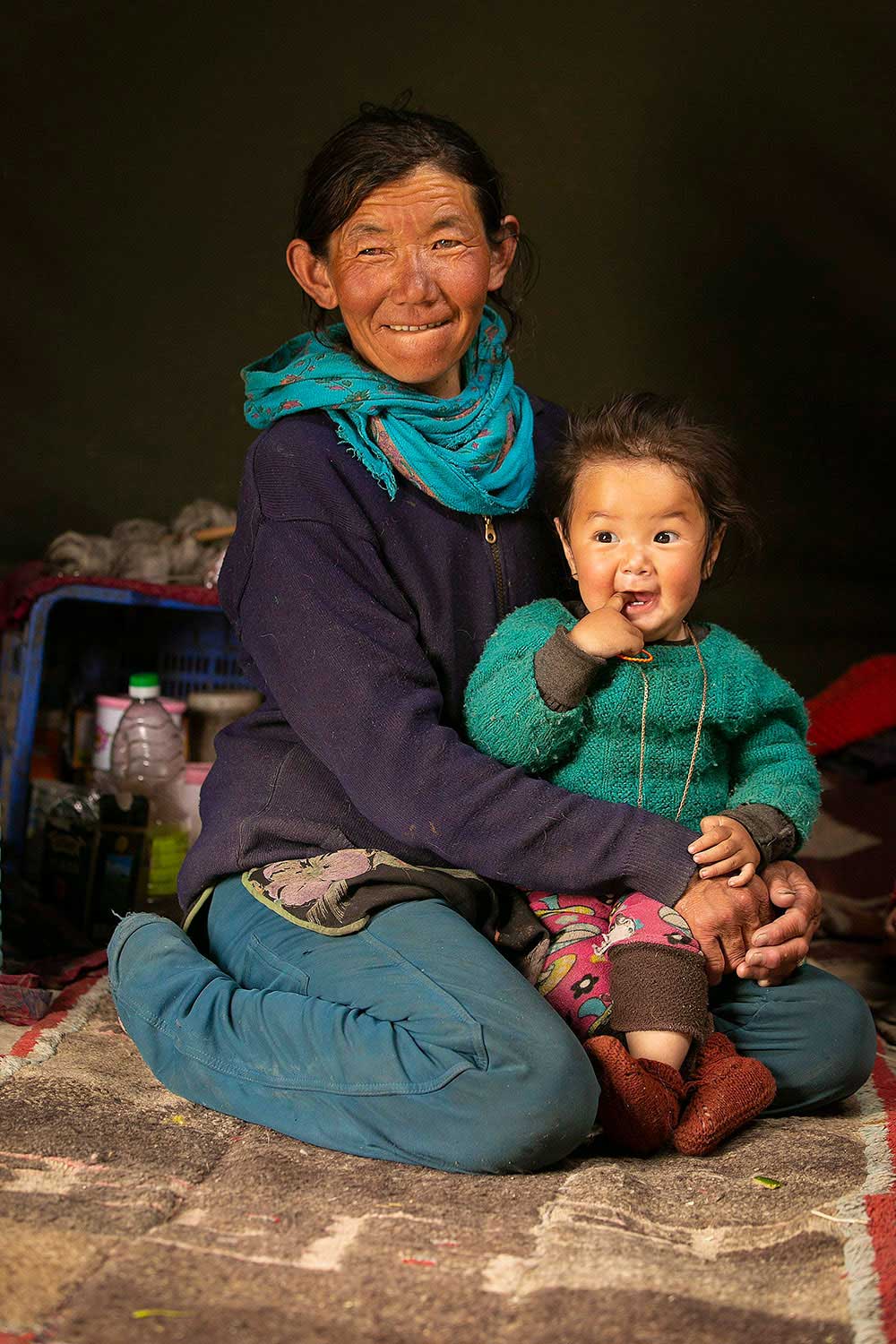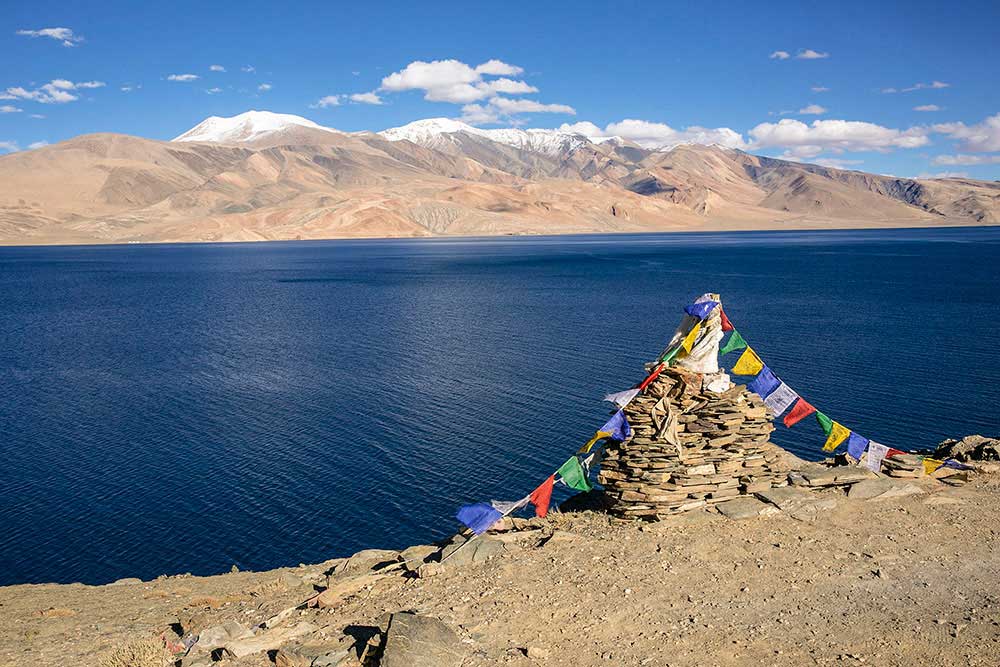As an old saying about Ladakh goes, “a land is so barren and the passes so high that only the best friends or fiercest enemies would want to visit us.” Here the air is so thin that it takes twice the effort to absorb oxygen out of each breath, yet it is the hardy Changpa nomads, who call these inhospitable heights home.
Renowned as the pashmina goat herders, they endure one of the toughest winters on the planet, all for the soft gold of pashmina. It is believed that, the more severe the winter, the finer the quality of pashmina the goats produce.
The Changthang is a desolate high altitude desert ranging from 3000 to 5200 metres in the south east of Ladakh. Here the nomads are spread all over the Changthang plateau right from Tanglang la pass to Pangong Lake. A small group of around 10 families move around a specific area according to the availability of the pastures and are identified by the same, like Mud Pa, Korzok Pa, Samad Pa and Karnak Pa.
It is estimated that there are close to 2 lakh pashmina goats in Changthang. The pashmina along with the ordinary wool is gathered in the month of June. There is a thorny bush called tsama (Tamarisk) that grows wild all over the Changthang. In June, this bush has leaves and yellow flowers on which the goats feed. In the process their pashmina wool sticks to the bush. The Changpas simply collect it, by plucking it off the thorns.
A typical day for the Changpas starts an hour before dawn. The first thing they do is tend to their precious cattle. Then just as the sun warms up the ground, they gather their lot and head out to graze. The ones who stay back prepare the meals. It takes the Changpas endless cups of the greasy gur-gur chai (butter tea) to get through the day. During the afternoon the women spend their time either making carpets, woollens or visiting the nearby monastery.
The Changpas are now at a crossroads though. While the younger generation is moving to the cities for government jobs and prospects in tourism, the older folk are holding on to their roots. It surely is a tough life, but one that is close to the earth and brings happiness and contentment to these hardy souls. [Official Website]



